Why you can trust Tom's Hardware
I ran all color tests in the PX275C Prime’s Standard picture mode. It comes closest to spec of all the picture modes and is the only preset that allows calibration.
Grayscale and Gamma Tracking
Our grayscale and gamma tests use Calman calibration software from Portrait Displays. We describe our grayscale and gamma tests in detail here.
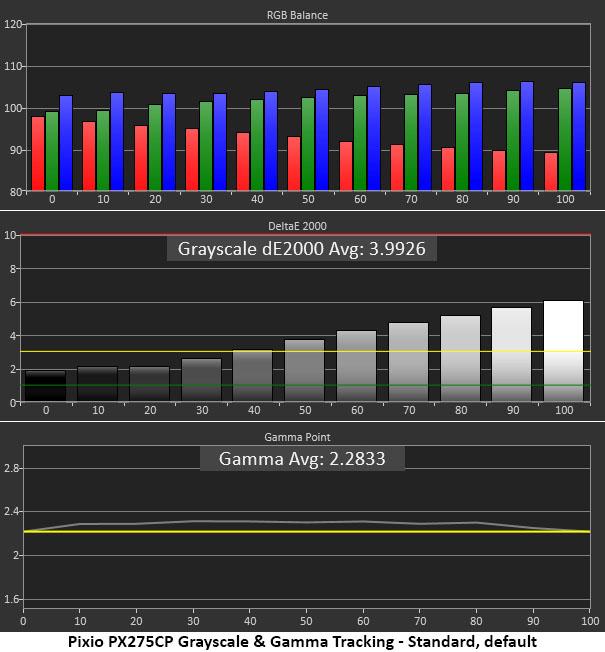
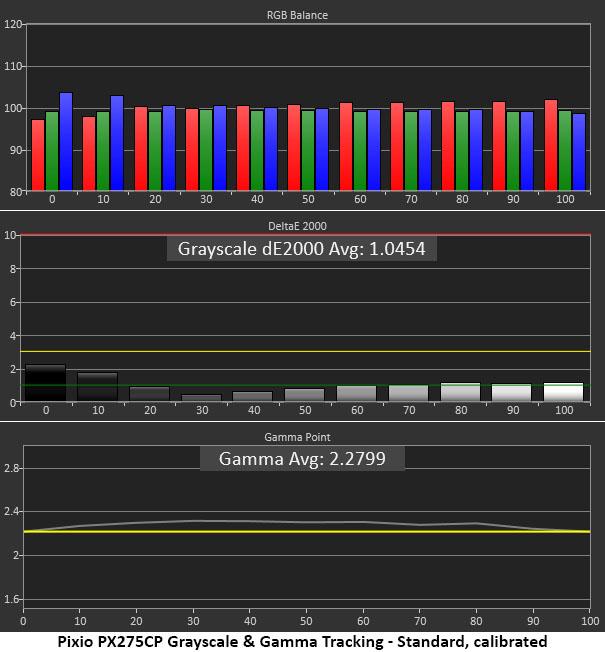
The initial grayscale measurement run shows a visible blue/green tint when viewing a step or field pattern. In actual content, neutral tones look cool, and the picture looks a bit flat. With red levels that drop as brightness increases, the error becomes more visible in bright scenes. Gamma tracking is very good, though with a slightly dark value that remains consistent from dark to light.
Calibration proved slightly challenging, but the end result was a noticeable improvement in picture quality. With all errors under 3dE and most under 2dE, the image is much more vibrant and realistic. Gamma remains unchanged, which is also a good thing.
Comparisons
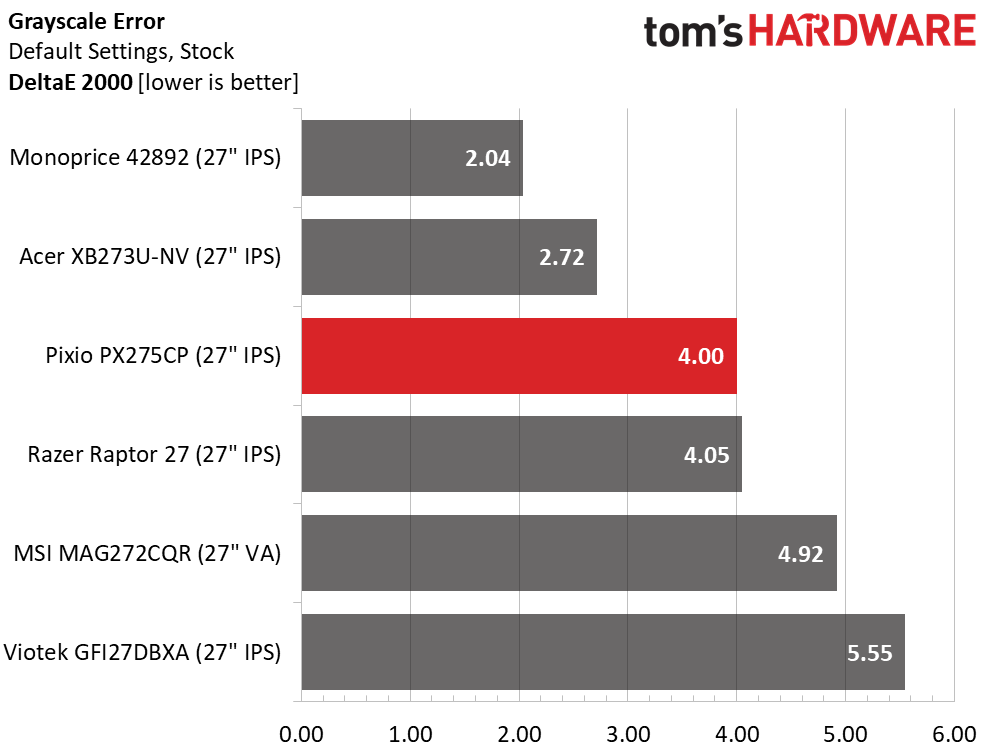
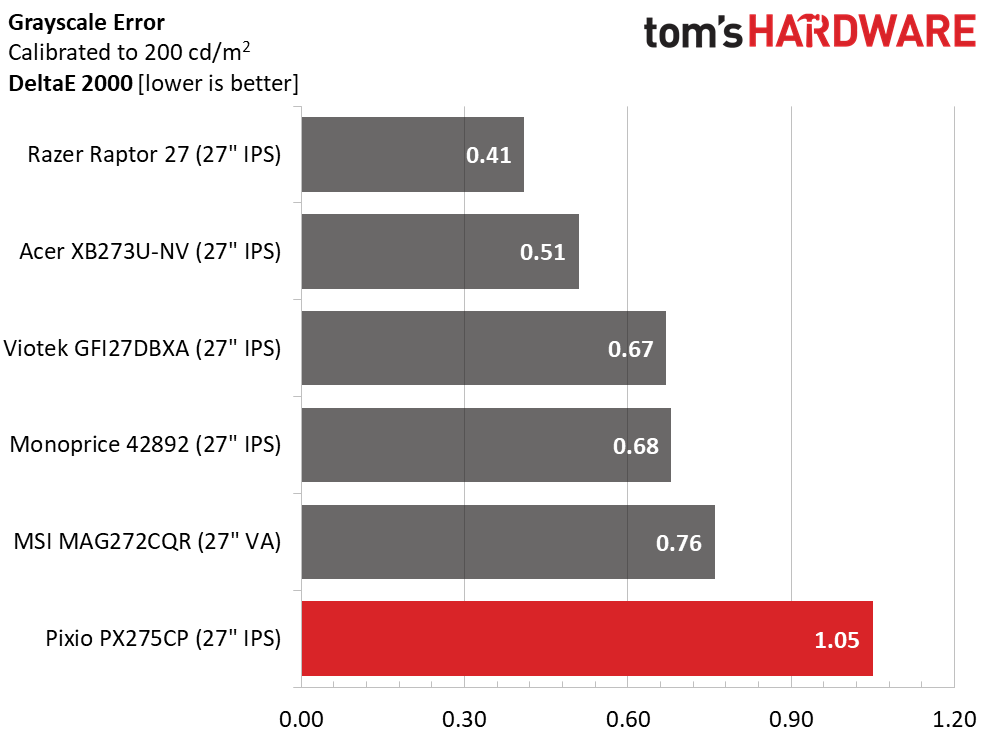
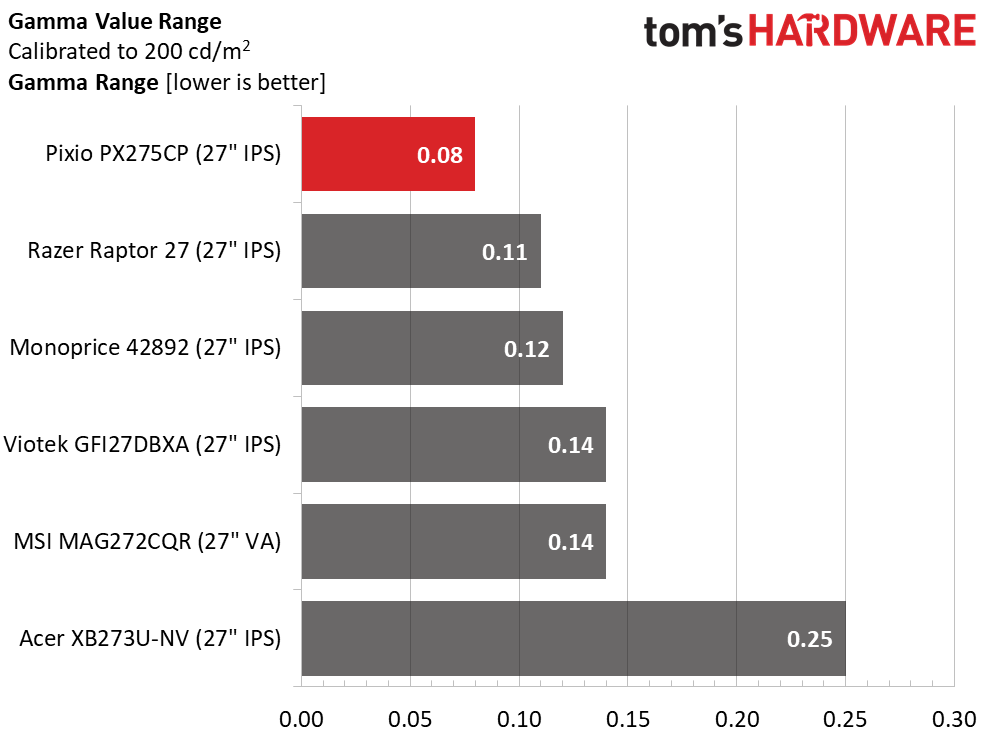
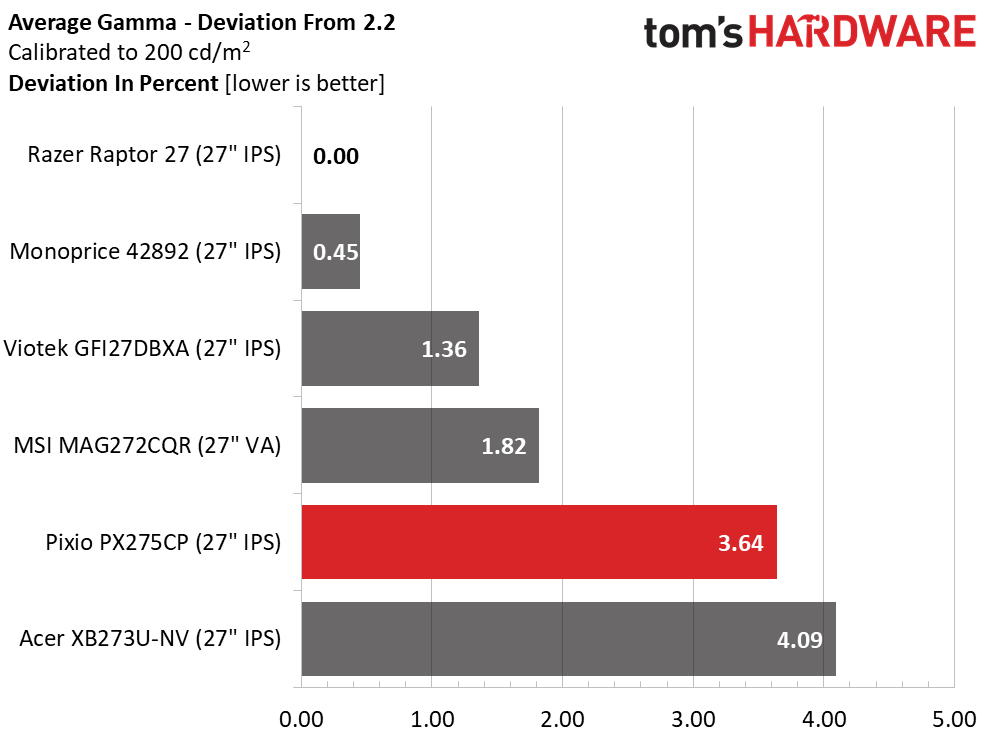
With a default grayscale error of 4dE, the PX275CP should be calibrated. Though it can be used unadjusted, I had no trouble seeing an improvement after changes were made. With a final average value of 1.05dE, it comes last but still has visibly perfect grayscale tracking.
Gamma tracking is the tightest of the bunch, with only a 0.08 range of values. Though it rides above the spec at 2.28 actual value, color looks nicely saturated and perceived contrast is a bit higher than the test results indicate.
Color Gamut Accuracy
Our color gamut and volume testing use Portrait Displays’ Calman software. For details on our color gamut testing and volume calculations, click here.
Get Tom's Hardware's best news and in-depth reviews, straight to your inbox.
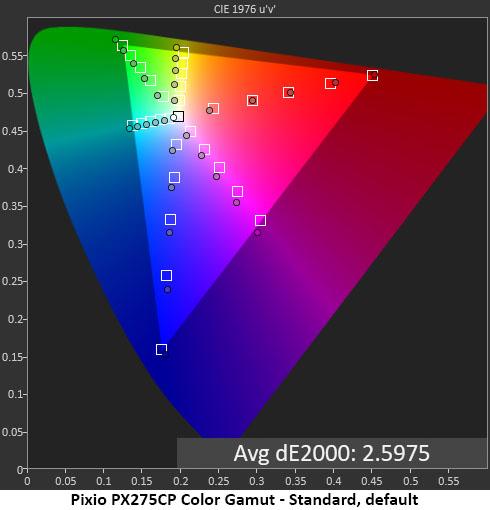
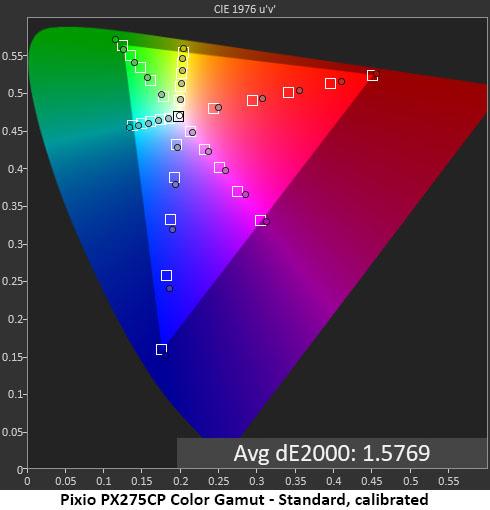
The Calman charts clearly show the PX275CP’s native sRGB color gamut. It’s a tiny bit over-saturated in green and blue with spot-on results for red. Thanks to the cool grayscale tracking, secondary colors are a bit off in hue.
After calibration, red looks more vibrant, and all primary colors are slightly over-saturated. This is due to the dark gamma tracking I noted earlier. Though I prefer a monitor to track 2.2 precisely, a dark error is better than a light one. Low gamma makes the image look washed out. The PX275CP errs in the right direction.
Comparisons
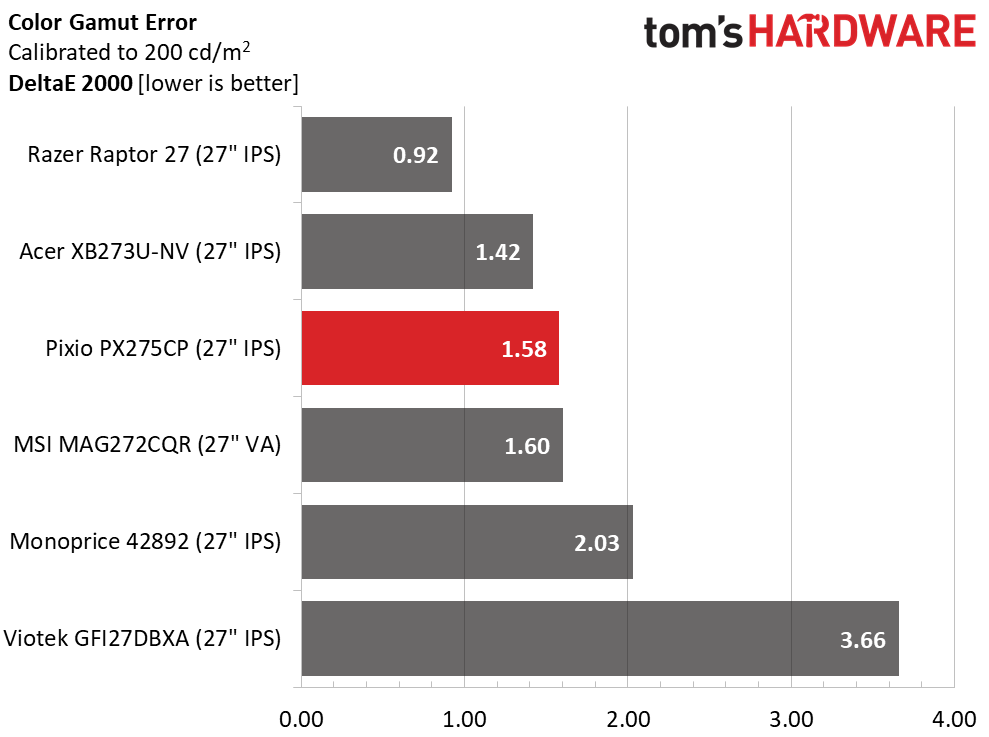
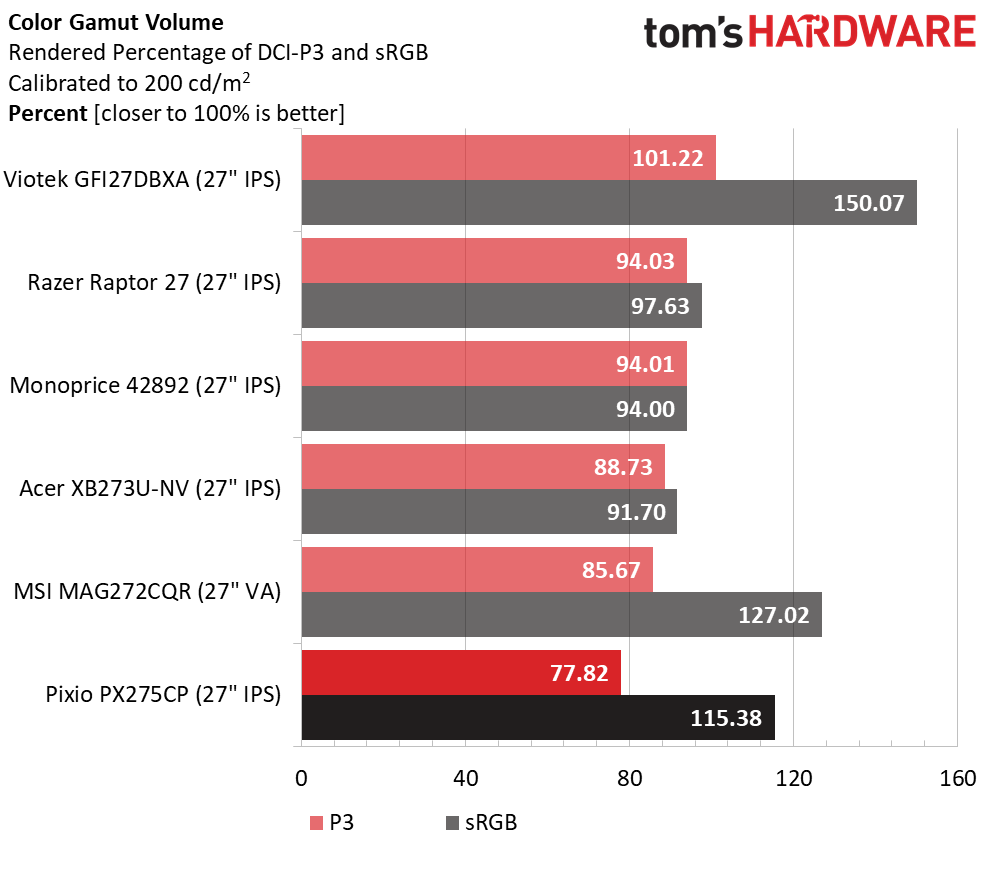
The PX275CP’s gamut errors are of no visible consequence either before or after calibration. My adjustments take this value-priced monitor to a professional level of accuracy. This is an impressive group of screens and the Pixio is right in the thick of the competition while costing less than all of them. Only the Monoprice comes close in the price/performance ratio contest.
Gamut volume is in the realm of sRGB plus being just over 115% of that gamut. Though the PX275CP supports HDR, it does not include extended color like the other screens here. This is the one place where Pixio should not have cut corners. Most users will want that extra color volume. But if an accurate sRGB gamut for SDR content is a priority for you, this monitor delivers.
Current page: Grayscale, Gamma and Color
Prev Page Brightness and Contrast Next Page HDR Performance
Christian Eberle is a Contributing Editor for Tom's Hardware US. He's a veteran reviewer of A/V equipment, specializing in monitors. Christian began his obsession with tech when he built his first PC in 1991, a 286 running DOS 3.0 at a blazing 12MHz. In 2006, he undertook training from the Imaging Science Foundation in video calibration and testing and thus started a passion for precise imaging that persists to this day. He is also a professional musician with a degree from the New England Conservatory as a classical bassoonist which he used to good effect as a performer with the West Point Army Band from 1987 to 2013. He enjoys watching movies and listening to high-end audio in his custom-built home theater and can be seen riding trails near his home on a race-ready ICE VTX recumbent trike. Christian enjoys the endless summer in Florida where he lives with his wife and Chihuahua and plays with orchestras around the state.